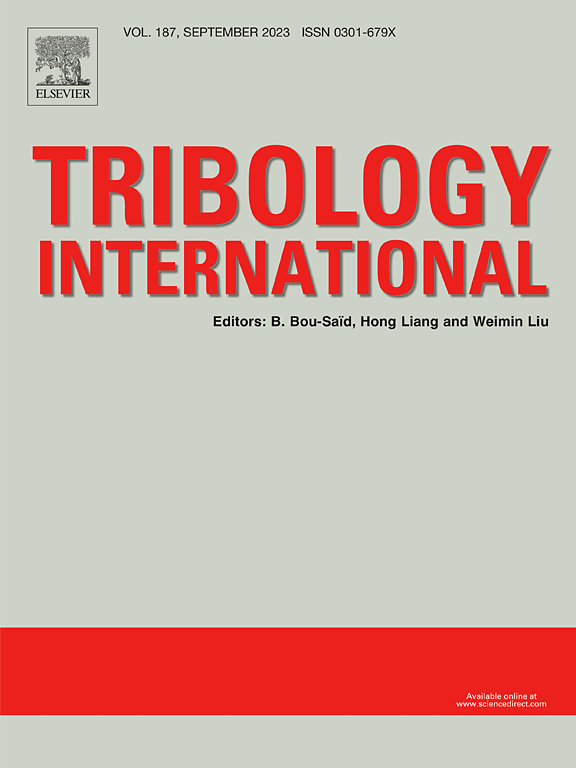红泥作为铜替代品在环保树脂基制动复合材料中的应用:性能评价和机器学习预测
IF 6.1
1区 工程技术
Q1 ENGINEERING, MECHANICAL
引用次数: 0
摘要
赤泥是氧化铝生产过程中产生的一种高碱性工业固体废物,由于其大量的储存,对环境构成了重大挑战。本研究提出了一种新的策略,利用赤泥作为无铜树脂基制动复合材料的填料,旨在取代环境问题和昂贵的铜。这种方法不仅为无铜制动复合材料提供了一条途径,而且为环保处理赤泥提供了一种潜在的解决方案。系统研究了赤泥含量对复合材料物理性能、力学性能和摩擦磨损性能的影响,并对其磨损机理进行了综合分析。结果表明,加入适量赤泥可提高复合材料的密度、硬度和冲击强度。至关重要的是,它有效地提高了中高温下的摩擦系数,减轻了热衰减。随着赤泥掺量的增加,密度和硬度呈比例增加,而冲击强度呈现出先减小后增大再减小的复杂非线性趋势。含有35% wt%赤泥的复合材料表现出最有利的整体摩擦磨损性能。采用响应面法(RSM)确定了最佳配方:18 wt%酚醛树脂、5 wt%竹纤维、15 wt%氧化铝、39 wt%赤泥、3 wt%石墨、5 wt%丁腈橡胶粉、15 wt%硫酸钡。该配方在100 ~ 350 °C的测试温度范围内保持稳定的摩擦系数在0.48和0.50之间。此外,采用五种机器学习方法建立了复合材料配方与摩擦系数的预测模型。交叉验证表明,粒子群优化-反向传播(PSO-BP)神经网络在测试集上的泛化能力最好(R²= 0.87284,预测精度= 97.5987 %),是最优的预测模型。这项研究成功地证明了用赤泥代替刹车复合材料中铜的可行性,从而生产出高性能、环保、无铜的树脂基刹车复合材料。本文章由计算机程序翻译,如有差异,请以英文原文为准。
Utilization of red mud as copper substitute in eco-friendly resin-based brake composites: Performance evaluation and machine learning prediction
Red mud, a highly alkaline industrial solid waste generated during the production of alumina, poses significant environmental challenges due to its massive stockpiling. This study proposes a novel strategy to utilize red mud as a filler in copper-free resin-based brake composites, aiming to replace environmentally problematic and costly copper. This approach not only offers a pathway towards copper-free brake composites but also presents a potential solution for the eco-friendly disposal of red mud. The effects of red mud content on the physical properties, mechanical properties, and friction-wear performance of the composites were systematically investigated, coupled with a comprehensive analysis of the wear mechanisms. Results indicate that incorporating an appropriate amount of red mud enhances the density, hardness, and impact strength of the composites. Crucially, it effectively improves the friction coefficient at medium to high temperatures, mitigating thermal fade. While density and hardness increased proportionally with red mud content, impact strength exhibited a complex non-linear trend, initially decreasing, then increasing, before decreasing again. The composite containing 35 wt% red mud demonstrated the most favorable overall friction-wear performance. An optimized formulation was derived using Response Surface Methodology (RSM): 18 wt% phenolic resin, 5 wt% bamboo fiber, 15 wt% alumina, 39 wt% red mud, 3 wt% graphite, 5 wt% nitrile rubber powder, and 15 wt% barium sulfate. This formulation maintained a stable friction coefficient between 0.48 and 0.50 across a test temperature range of 100 ∼ 350 °C. Furthermore, five machine learning methods were employed to establish predictive models correlating the composite formulation with the friction coefficient. Cross-validation revealed that the Particle Swarm Optimization-Back Propagation (PSO-BP) neural network exhibited the best generalization capability on the test set (R² = 0.87284, prediction accuracy = 97.5987 %), identifying it as the optimal prediction model. This study successfully demonstrates the feasibility of using red mud to replace copper in brake composites, yielding high-performance, eco-friendly, copper-free resin-based brake composites.
求助全文
通过发布文献求助,成功后即可免费获取论文全文。
去求助
来源期刊

Tribology International
工程技术-工程:机械
CiteScore
10.10
自引率
16.10%
发文量
627
审稿时长
35 days
期刊介绍:
Tribology is the science of rubbing surfaces and contributes to every facet of our everyday life, from live cell friction to engine lubrication and seismology. As such tribology is truly multidisciplinary and this extraordinary breadth of scientific interest is reflected in the scope of Tribology International.
Tribology International seeks to publish original research papers of the highest scientific quality to provide an archival resource for scientists from all backgrounds. Written contributions are invited reporting experimental and modelling studies both in established areas of tribology and emerging fields. Scientific topics include the physics or chemistry of tribo-surfaces, bio-tribology, surface engineering and materials, contact mechanics, nano-tribology, lubricants and hydrodynamic lubrication.
 求助内容:
求助内容: 应助结果提醒方式:
应助结果提醒方式:


